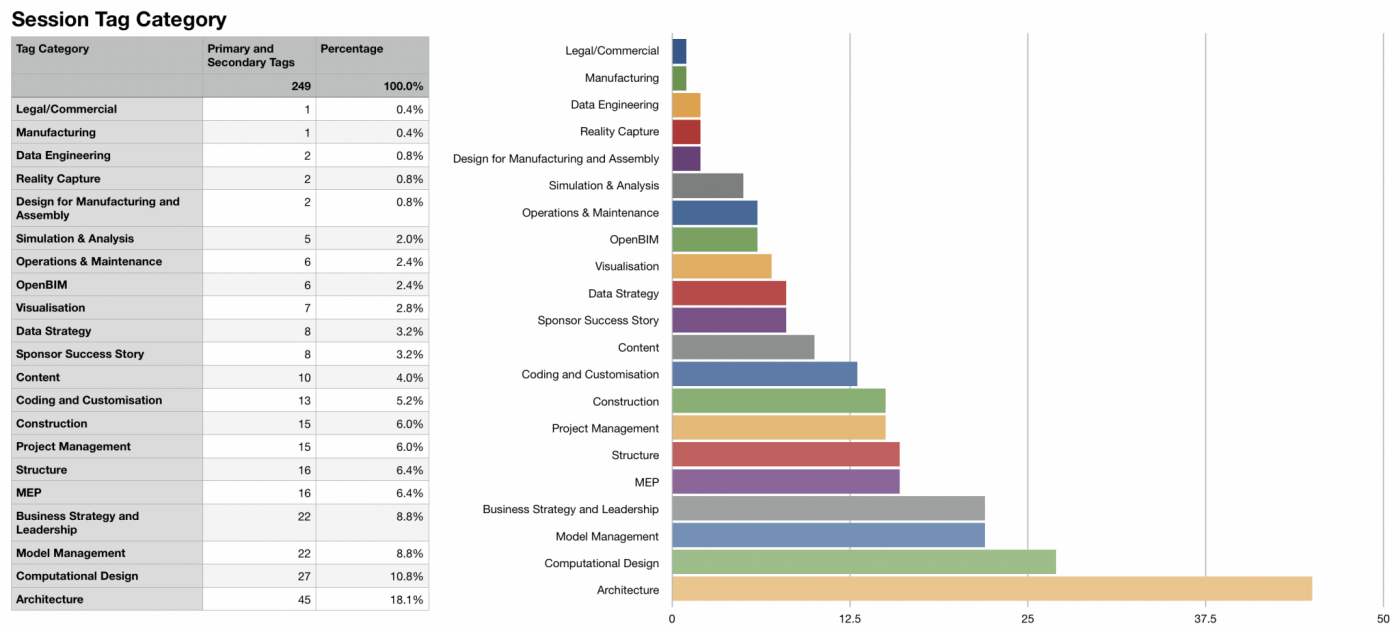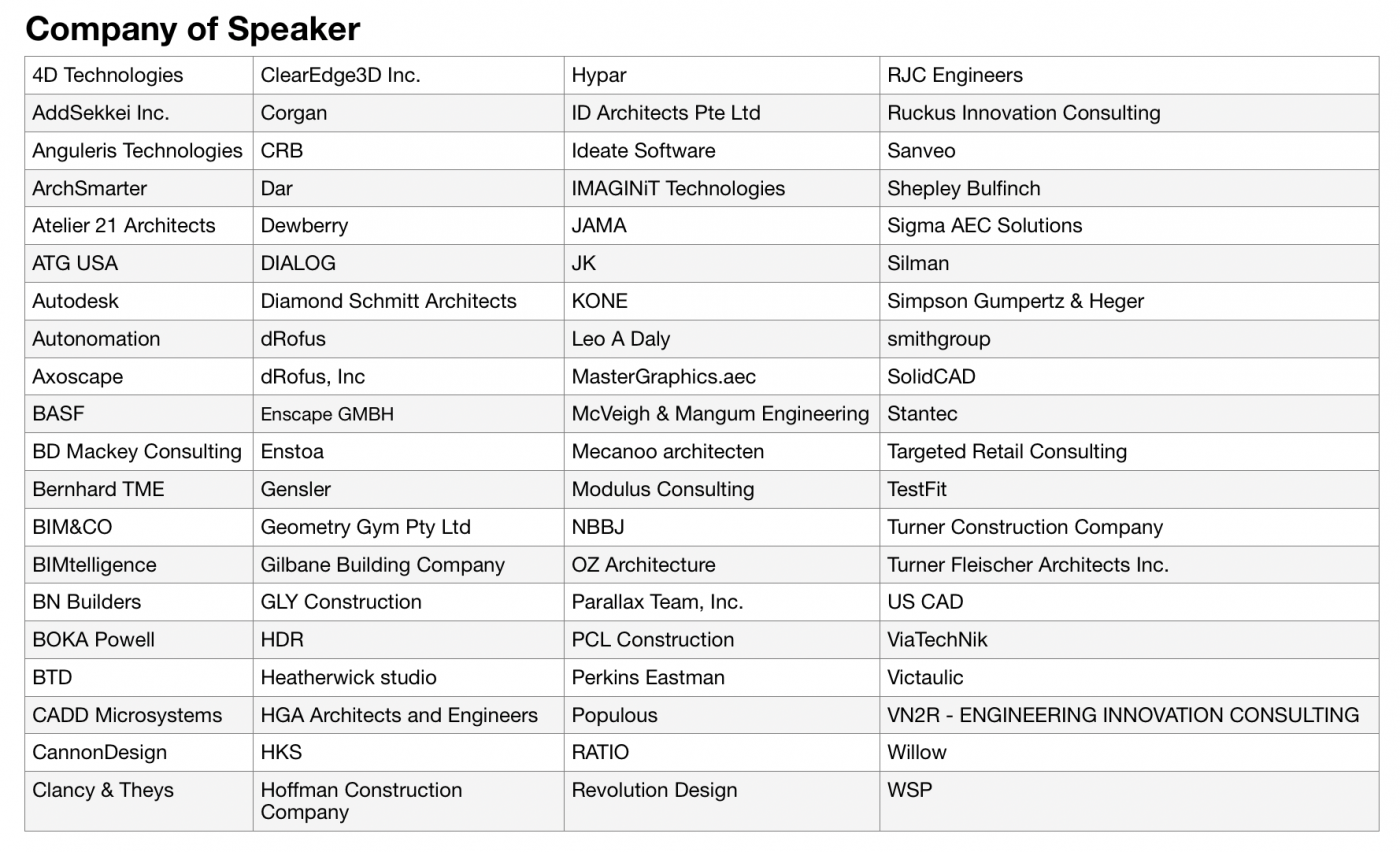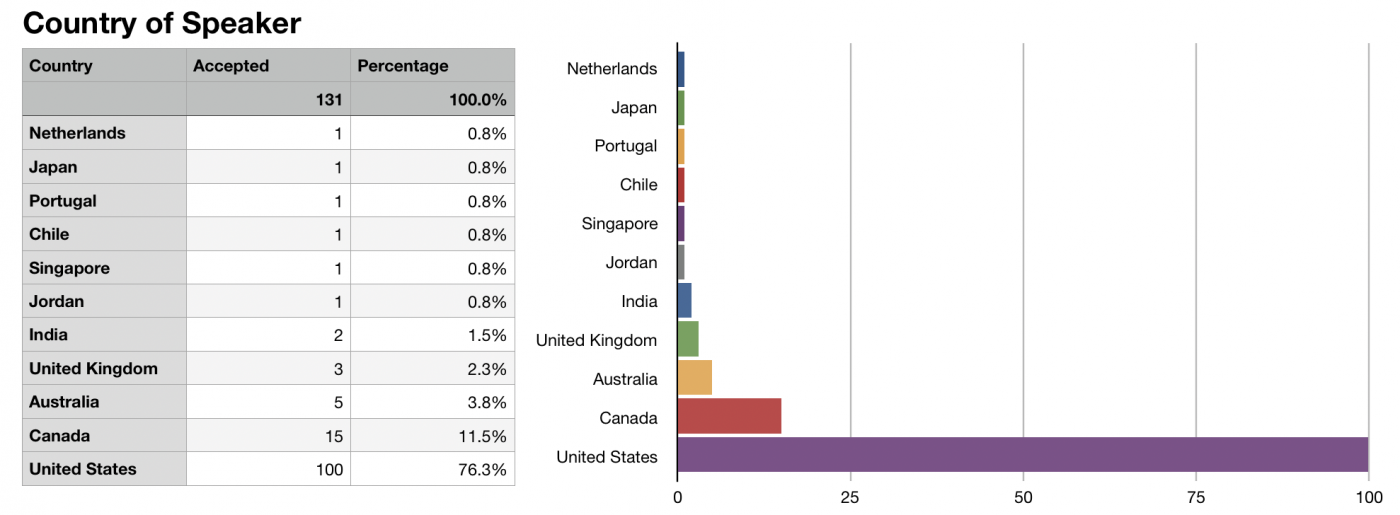The Chosen Ones

Now that the acceptance letters for the BILT NA conference in July 2019 have gone out let’s talk about what we do after we select proposals in order to make sure that we have a balanced conference schedule.
After we’ve selected proposed abstracts during the workshop (about 4 months before the conference) we need to make sure that the overall fit and finish of the schedule isn’t skewed in any particular direction. So we compare a number of parameters of accepting sessions
During the abstract submission process we ask potential speakers to tag their sessions with primary and secondary tags that describe the overall session. We want to make sure that practically all tags are represented on balance with the likely interests of the attendees. As you can see from the list below architecture still scores quite heavily but computational design and model management are very important as well.
Disciplines such as MEP and Structure are also high on the list. Construction as a proposed topic has significantly grown over the last few years. This is in line with our intention to create a conference that represents the integration of design through construction teams and workflow.

With a very limited exception we don’t want any speakers to present more than three classes. As you can see from the chart below less than 20% of our speakers this year will present more than one session. The vast majority of speakers will only present one session. We feel this allows attendees to really enjoy the conference rather than locked themselves away in their hotel room wrapping up last minute presentations.

We also like to take a moment and understand what companies have been selected to present at the conference. As you can see from the list below some of the companies are solutions providers, some are consultants but the vast majority are companies that have to design, engineer and construct the built environment.

Speaker proposals come from a multitude of countries and we don’t reject any proposals based on country of origin. However we do take into account travel dynamics and additional costs.

As you can see from the chart below we prefer sessions that are hands-on and technical or strategic from a management standpoint. Case studies of real world projects are also very valuable. The least accepted class type is theory-based. The likelihood of getting a theory-based session accepted is very low because we prefer sessions that are practical and repeatable for the rest of the attendees.

We don’t reject sessions that are advanced or expert level. It just so happens that the majority of sessions proposed are tagged as intermediate level. We don’t tend to accept sessions that are beginner level in North America because it doesn’t fit our attendee demographic

From the very beginning this conference was intended to be a multi-platform and software vendor agnostic conference. We want session proposals based on solution – without regard to software platform. We even recently changed the conference name to BILT in order to communicate this software agnostic approach and welcome solutions from a multitude of other companies.
That said our conference delegates are heavily invested a using software from Autodesk. That’s because a lot of us in the design space are heavily invested in Revit and the ecosystem around Revit. But we also have business problems to solve and we know that there are incredibly valuable solutions from other companies.
As you can see from below nearly 50% of accepted sessions are not vendor specific. These sessions will contrast and present solutions from a multitude of software providers in order to demonstrate best of class solutions.

I hope this overview helps everyone understand the thought processes that go into accepting proposals for the North American BILT conference. If you have any questions please feel free to reach out to me directly.
Phil Read

Stay social. follow #DBEI